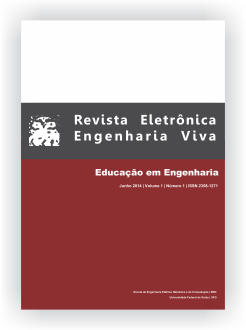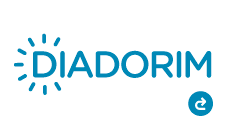A Estratégia PjBL no Século XXI: Utilização das Ferramentas Digitais
Resumen
Nos dias atuais, a carreira de engenharia requer habilidades transversais e uma graduação multidisciplinar, a fim de lidar com campos em constante transformação, como o social, ambiental e econômico. Baseado em Project-based Learning Strategy, os resultados do projeto objetivaram o desenvolvimento de habilidades de estudantes para resolver problemas e trabalhos em equipes multidisciplinares melhorando suas habilidades de comunicação, visão crítica e capacidade de gerenciamento; todo o projeto foi desenvolvido utilizando ferramentas TIC (Web 2.0). O projeto, nomeado “Calouro Web 2.0” foi totalmente desenvolvido sobre a responsabilidade da equipe do “Programa de Educação Tutorial da Engenharia Elétrica – PET-Elétrica” e foi direcionado para os calouros do curso os quais, organizados em grupos, debateram sobre questões de engenharia atuais, através da plataforma “Energia Inteligente” (http://energiainteligenteufjf.com/). A equipe do PET-Elétrica teve a responsabilidade de executar o planejamento do projeto, auxiliar os estudantes e avaliar seu desempenho. A análise obtida mostra que os resultados associados às competências transversais foram alcançados, reforçando as características do perfil profissional dos participantes.
Palavras-chave: Calouro Web 2.0, Competências Transversais, Energia Inteligente, Ferramentas TIC.
Citas
Felder, R. M. Engineering Education in 2015 (or Sooner) Proceedings of the 2005 Regional Conference on Engineering Education, December 12-13, Johor, Malaysia, 2005.
Felder, R. M. Brent, R. Designing and Teaching Courses do Satisfy the ABET Engineering Criteria, Journal of Engineering Education, 92(1), pag. 7-25, 2003.
Anderson, P. What is WEB 2.0? Ideas, Technologies and Implications for Education, JISC Technology and Standards Watch, Feb. 2007.
Boss, S; Kraus, J. Reinventing Project-Based Learning: Your Field Guide do Real-world Projects in the Digital Age, International Society for Technology in Education, ISTE. Washington. 2007.
Dormido, S. B. Control Learning: Present and Future. 15th Triennial IFAC World Congress. Barcelona, Spain - 2002.
Committee on Engineering Education. Educating the Engineer of 2020: Adapting Engineering Education to the New Century Committee on the Engineer of 2020 – Phase II. National Academy of Engineering, 2005.
Felder, R. M. Does Engineering Education Have Anything to Do with Either One? Toward a Systems Approach to Training Engineers The R. J. Reynolds Industries, INC. Award Distinguished Lecture Series, North Carolina State University, October, 1982.
Felder, R. M. Engineering Education in 2015 (or Sooner) Proceedings of the 2005 Regional Conference on Engineering Education, December 12-13, Johor, Malaysia, 2005.
Hmelo-Silver, C.E. (2004). Problem-Based Learning: What and how do students learn?. Educational Psychology Review, 16.
Li, T.; Suo, Z. Engineering Education in the Age of WEB 2.0, IMECE2007 Nov. 2007.
McDonald, B. Improving Teaching and Learning Through Assessment: a Problem-Based Learning Approach. Common Ground Publishing, Sidney, 2010.
Noordin, M. K.; Nasir, A. N.; Ali, D. F.; Noordin, M. S. Problem-Based Learning (PBL) and Project-Based Learning (PjBL) in engineering education: a comparison. Proceedings of the IETEC’11 Conference, Kuala Lumpur, Malaysia, 2011.
Rugarcia, A.; Felder, R. M.; Woods, D. R, Stice, J. E. The Future of Engineering Education I. A Vision for a New Century. Chem. Engr. Education, 34(1), 16–25, 2000.
Silveira, M. A. A. Formação do Engenheiro Inovador: uma visão internacional. Sistema Maxwell, PUC, Rio de Janeiro, 2005. The Engineer of 2020: Visions of Engineering in the New Century National Academy of Engineering. National Academies Press, 2004.
Prince, M. Does Active Learning Work? A Review of the Research Journal of Engineering Education p. 1-9, July, 2004.
Thomas, John W. A Review of Research on Project-Based Learning. Disponível em <http://www.bie.org/research/study/review_of_project_based_learning_ 2000>.
Railsback, J. Project-based instruction: Creating excitement for learning, 2002. Retrieved October 5, 2007, from http: //www.nwrel.org/request/2002aug/profdevel.html
Xianyun Du, Erik de Graaff, Anette Kolmos, Research on PBL Practice in Engineering Education, Netherlands: Sense Publishers, May 22, 2009.
Noordin, M. K.; Nasir, A. N.; Ali, D. F.; Noordin, M. S., Problem-Based Learning (PBL) and Project-Based Learning (PjBL) in engineering education: a comparison. Proceedings of the IETEC’11 Conference, Kuala Lumpur, Malaysia, 2011.
Anderson, P. “What is WEB 2.0? Ideas, Technologies and Implications for Education”, JISC Technology and Standards Watch, Feb. 2007
Friedman, T. L. O Mundo é Plano: Breve História do Séc. XXI, Editora Objetiva, Rio de Janeiro, 2007.
Amanda Aparecida da Silva, Arthur Linhares Esteves dos Reis, Fernando Cesar Gomes Monteiro, Henrique Junqueira Schettino, João Tito Almeida Vianna, Leonardo Magalhães Feitosa de Melo, Francisco José Gomes, “Transversalidade na Educação em Engenharia com a web 2.0: O Projeto Energia Inteligente”. XXXVIII COBENGE, Fortaleza, setembro, 2010.
Anderson, L.W. and D. KRATHWOHL (Eds.) (2001). A Taxonomy for Learning, Teaching and Assessing: a Revision of Bloom’s Taxonomy of Educational Objectives. Longman, New York.
Descargas
Publicado
Número
Sección
Licencia
Copyright
The author is responsible for the following statements by submitting an article electronically in the International Journal of Alive Engineering Education (IJAEEdu):
a) States that the document in question was reviewed by an expert in English language and it is an original work and it holds the prerogative to grant the rights contained in this license. It also states that the document does not infringe, as far as it is possible to know the rights of any other person or entity.
b) If the document in question contains material which does not hold the copyright, the author states have obtained the copyright holder’s permission to grant the Universidade Federal de Goiás (UFG) the rights required by this license, and that such material whose rights are third is clearly identified and acknowledged within the text or content of the document.
c) States that the study was conducted in accordance with the ethical standards of all applicable institutional, local, national and international guidelines.
d) It also states that any person appointed as author or co-author of the document is aware of it and agrees to be so appointed.
Authorization Form
As responsible for the submission of the document, I authorize the School of Electrical, Mechanical and Computer Engineering of the Federal University of Goiás to provide the paper free of charge, through the Electronic System for Publishing Magazines UFG (SEER / UFG) or in printed form, without compensation of copyright, in accordance with Law No. 9610/98. Is allowed, reading, printing and / or download, as a promotion of the Brazilian scientific production. Any use of the work not authorized under this license or the copyright law is prohibited.



